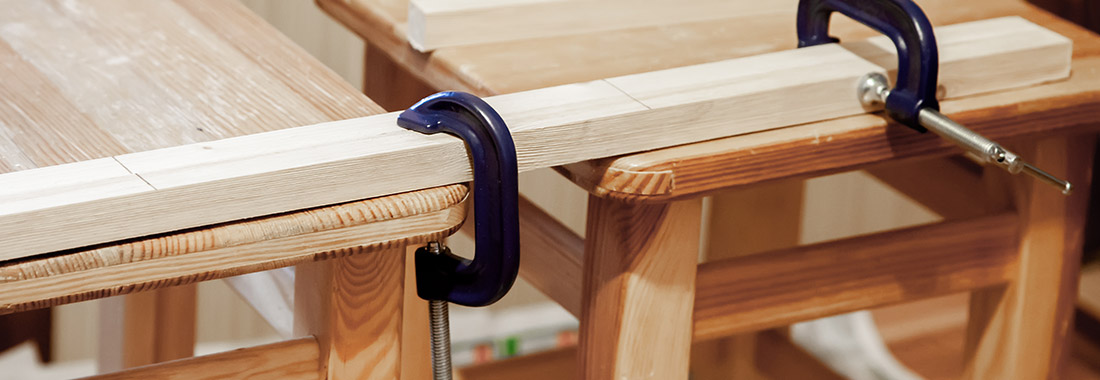

In our introductory guide to clamps and cramps, we’ll take a look at some of the most common types of clamps on the market, how they differ and what they’re useful for. Shopping for a clamp or crimp is quite simple once you get to understand the basics.
What are clamps and cramps?
Clamps are simple hand tools that have been used for many hundreds of years to press or hold two objects together. They are essential in various aspects of woodwork, metalwork, engineering and manufacturing. They enable two (or sometimes more) objects to be held firmly in place while working or bonding them together with glue.
Most types of clamp and cramp are designed to be temporary and adjustable, though some are permanently set in place. There are various different shapes, sizes and specifications of clamps available, though most comprise a frame, screw, collar, handle, a fixed jaw and a moveable jaw.
You may also find that depending on your requirements, there are several different types of clamps or cramps that are perfectly suited to the job.
What are the different types of clamp?
There’s a wide range of clamps and cramps available, with the vast majority falling within one of the following categories:
G/C clamps
- G clamps are named after their shape which resembles a capital G, though in some instances look more like a C – hence the differentiation.
- Perhaps the most versatile and widely used type of clamp, which can be used to hold objects together or to clamp objects firmly to a work surface.
- Sizes are available to suit all requirements, typically with a ‘throat’ starting from 3 inches up to 14 inches or more.
- G clamps are also manufactured from a variety of different materials – from lightweight plastic through to ultra-heavy-duty iron.
Spring clamps
- Sometimes referred to as pinch clamps due to the way they use a spring loaded mechanism to ‘pinch’ materials together.
- Spring loaded crimps are more suitable for light-weight applications as the pressure is relatively minimal and cannot be adjusted.
- Rubber or plastic pads are often used to line the jaws of the clamp to prevent damage being caused to the surface of the materials being held.
- A spring clamp is great for carpentry and general woodworking projects involving fragile and delicate materials.
F clamps
- The F clamp takes its name from its shape resembling a capital F, with two small perpendicular jaws and a long vertical bar.
- This is significantly more sturdy and durable than a spring clamp, making it a popular choice for demanding DIY projects.
- The F clamp is available in an extensive range of sizes, materials and specifications to suit all requirements.
Sash clamps
- Sash clamps feature a flat bar with a fixed jaw, using a screw action to adjust and tighten it as required.
- This type of clamp takes its name from its primary application of window frame carpentry and joinery, wherein several sash clamps are used simultaneously.
Toggle clamps
- Toggle clamps are one of several specialist types of clamp that provide a permanent bond once secured in position.
- They are available in a wide variety of shapes and sizes to accommodate different materials, components and objects.
Other types of clamp and cramp available for a variety of purposes include right angle, corner, pipe, quick release and band clamps.
How to use a clamp
All woodworking cramps are designed with a specific purpose in mind. The following tips and guidelines apply in most instances when working with clamps:
- It is advisable to position a piece of scrap wood between the surface of the object and the mouth of the clamp, to help minimise marking or damage to the surfaces.
- The mouth of the clamp is usually opened by turning the screw in an anticlockwise direction, until the opening is large enough.
- Carefully tighten the screw (or gradually release the handle) until the mouth provides a firm grip on the objects.
- Tighten until the grip is as firm as needed, being careful not to tighten so much as to damage the surface of the materials.
- Always release a clamp or cramp slowly and carefully to avoid dropping or damaging the objects you are working on.
Cleaning and maintenance requirements vary significantly from one clamp to the next, though rarely involve anything more than the occasional application of an approved lubricant. Consult the manufacturer’s guidelines for more information.



